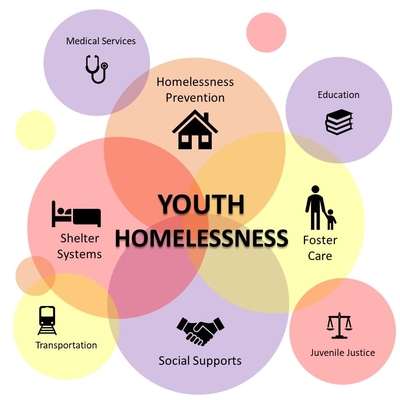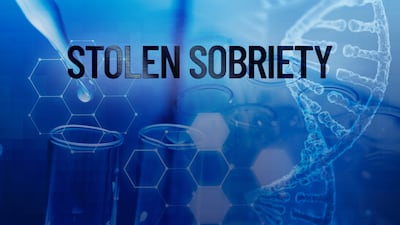Faculty to Lead Evaluation of New Jersey’s Child Welfare System in Partnership with Department of Children and Families – Montclair State University

Report on Strategic Partnership to Advance Child Welfare and Sustainable Development Goals in New Jersey
Date: July 31, 2025
1.0 Introduction
Montclair State University’s Department of Social Work and Child Advocacy has secured a two-year renewable contract with the New Jersey Department of Children and Families (DCF). This partnership is designed to provide expert evaluation and data analysis for the state’s child welfare system. The initiative directly supports New Jersey’s commitment to legislative reforms and aligns with several key United Nations Sustainable Development Goals (SDGs), particularly those focused on health, reducing inequality, and building strong institutions.
The project will be directed by Associate Professor Wendy Zeitlin, with support from Professors Emily Douglas and Svetlana Shpiegel. This collaboration represents a significant investment in public service, leveraging academic expertise to enhance the well-being of vulnerable populations.
2.0 Project Background and Strategic Context
This initiative is established in the context of significant reforms within New Jersey’s child welfare system. Following a period of federal oversight that concluded with substantial improvements, state legislation in 2022 mandated the creation of the Staffing and Oversight Review Subcommittee (SORS). The primary function of SORS is to deliver annual performance reports on the system’s effectiveness. This project provides the critical research and analytical support required for SORS to fulfill its legislative mandate, thereby strengthening state institutions in line with SDG 16 (Peace, Justice and Strong Institutions).
3.0 Objectives and Alignment with Sustainable Development Goals (SDGs)
The project’s core objective is to ensure the safety, stability, and well-being of children and families, a goal that resonates deeply with the 2030 Agenda for Sustainable Development. The partnership’s activities are aligned with the following SDGs:
- SDG 3: Good Health and Well-being: The project’s central aim is to improve the welfare system, which is fundamental to securing the physical and mental well-being of children and families.
- SDG 10: Reduced Inequalities: By focusing on the state’s most vulnerable members, the initiative directly addresses systemic inequalities and aims to ensure that all children have a foundation for a stable life.
- SDG 16: Peace, Justice and Strong Institutions: The work enhances the accountability, transparency, and effectiveness of a critical public institution (DCF), contributing to a more just and responsive system for child welfare.
- SDG 17: Partnerships for the Goals: This collaboration between a public university and a state government agency exemplifies the multi-stakeholder partnerships essential for achieving sustainable development outcomes.
- SDG 4: Quality Education: The project provides invaluable, hands-on policy and evaluation experience for Montclair State University students, contributing to the development of the next generation of social work and child advocacy professionals.
4.0 Scope of Work and Methodology
The project will be implemented in phases, drawing upon the faculty’s expertise in national child welfare trends and federal data analysis.
4.1 Phase One Activities
- Data Analysis and Replication: The team will replicate and refine previous analyses to establish a rigorous baseline for performance measurement.
- National Contextualization: New Jersey’s progress will be situated within the broader national landscape to provide comprehensive context and identify best practices.
- Enhanced Reporting: A key focus will be on improving data storytelling to make annual reports more accessible and meaningful for all stakeholders, from policymakers to the public. This promotes the institutional transparency central to SDG 16.
4.2 Phase Two Expansion
In its second year, the project’s scope will broaden to include:
- Integration of additional performance indicators as outlined in state legislation.
- Development of a sustainable, long-term evaluation framework to support ongoing system improvement and accountability.
5.0 Broader Impacts and Long-Term Vision
This partnership is envisioned as a long-term collaboration with transformative potential for the state and its residents.
5.1 Impact on Public Institutions
The project will provide SORS and DCF with robust, evidence-based tools for decision-making, strengthening the state’s capacity to protect children and support families, thereby reinforcing the objectives of SDG 16.
5.2 Impact on Human Capital Development
By involving students directly in high-level evaluation work, the project serves as a powerful educational tool. It aligns with SDG 4 by equipping students with the skills to drive real-world change and address complex social challenges.
5.3 Impact on Community Well-being
Ultimately, the initiative is designed to generate a lasting, positive impact on New Jersey’s children and families. By fostering an effective and data-informed child welfare system, the partnership contributes directly to achieving SDG 3 (Good Health and Well-being) and SDG 10 (Reduced Inequalities) across the state.
Analysis of SDGs in the Article
1. Which SDGs are addressed or connected to the issues highlighted in the article?
-
SDG 16: Peace, Justice and Strong Institutions
- The article focuses on improving New Jersey’s child welfare system, which had previously been under federal oversight due to “widespread concerns about its performance.” The partnership aims to ensure the “safety, stability, and well-being of children and families,” which is central to building effective, accountable, and inclusive institutions at all levels and protecting children from violence and abuse.
-
SDG 17: Partnerships for the Goals
- The entire article is about a “significant, two-year renewable contract” between Montclair State University (a public academic institution) and the New Jersey Department of Children and Families (a state government agency). This collaboration is described as a “vital university-agency partnership” and a “long-term collaboration to improve the lives of children and families,” directly embodying the spirit of multi-stakeholder partnerships.
-
SDG 4: Quality Education
- The project provides “rare hands-on opportunities for Montclair students.” It is highlighted that students will “learn how research and evaluation can serve communities and drive real-world change,” thus gaining practical, policy-relevant skills that enhance their education and prepare them for future employment in fields like social work and child advocacy.
2. What specific targets under those SDGs can be identified based on the article’s content?
-
Target 16.2: End abuse, exploitation, trafficking and all forms of violence against and torture of children.
- The project’s core mission is to support the oversight of the child welfare system to ensure the “safety, stability, and well-being of children.” By producing “annual performance reports on the child welfare system’s effectiveness,” the faculty are directly contributing to the institutional mechanisms designed to protect children from harm and neglect, which are forms of abuse and violence.
-
Target 17.17: Encourage and promote effective public, public-private and civil society partnerships, building on the experience and resourcing strategies of partnerships.
- The article details a formal public-public partnership established through a “two-year renewable contract” between a state university and a state agency. This collaboration leverages the university’s “research expertise” and the state’s need for performance evaluation, showcasing an effective partnership model to achieve public good.
-
Target 4.4: By 2030, substantially increase the number of youth and adults who have relevant skills, including technical and vocational skills, for employment, decent jobs and entrepreneurship.
- The project offers students direct involvement in high-level policy evaluation. The article states that students “will gain exposure to the policy, evaluation, and systems-level challenges facing New Jersey’s child welfare agencies.” This experience provides them with relevant, real-world skills in data analysis, policy evaluation, and social research, enhancing their qualifications for employment.
3. Are there any indicators mentioned or implied in the article that can be used to measure progress towards the identified targets?
-
For Target 16.2:
- The primary indicator mentioned is the creation of “annual performance reports on the child welfare system’s effectiveness in key areas.” The article also notes that in the second year, the project will “expand to incorporate additional indicators,” signifying a commitment to ongoing and detailed measurement of the system’s performance in protecting children.
-
For Target 17.17:
- A concrete indicator is the existence of the “significant, two-year renewable contract” between Montclair State University and the NJ Department of Children and Families. This contract serves as formal evidence of a functioning public-public partnership aimed at a specific social goal.
-
For Target 4.4:
- An implied indicator is the number of students participating in the project. The article describes the project as creating “rare hands-on opportunities for Montclair students,” suggesting that the extent of student involvement is a measure of the project’s educational impact and its success in providing relevant skills.
4. Table of SDGs, Targets, and Indicators
| SDGs | Targets | Indicators |
|---|---|---|
| SDG 16: Peace, Justice and Strong Institutions | 16.2: End abuse, exploitation, trafficking and all forms of violence against and torture of children. | Production of “annual performance reports on the child welfare system’s effectiveness”; Plan to “incorporate additional indicators” to measure system performance. |
| SDG 17: Partnerships for the Goals | 17.17: Encourage and promote effective public, public-private and civil society partnerships. | The existence of a “significant, two-year renewable contract” between a public university and a state agency. |
| SDG 4: Quality Education | 4.4: Substantially increase the number of youth and adults who have relevant skills for employment. | The provision of “rare hands-on opportunities” for students to gain experience in policy, evaluation, and systems-level analysis (Implied: Number of students participating). |
Source: montclair.edu

What is Your Reaction?
 Like
0
Like
0
 Dislike
0
Dislike
0
 Love
0
Love
0
 Funny
0
Funny
0
 Angry
0
Angry
0
 Sad
0
Sad
0
 Wow
0
Wow
0



























;Resize=805#)


















































